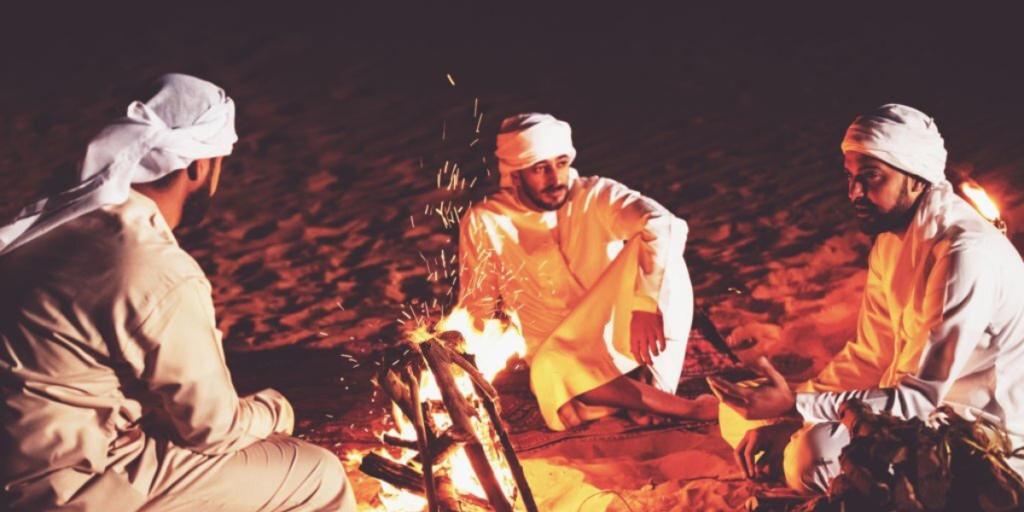Desert safaris are a popular form of adventure tourism that involve exploring arid and semi-arid landscapes in off-road vehicles, often with the goal of experiencing the unique natural environment, cultural heritage, and local customs of the region. While modern desert safaris are often associated with the Middle East and North Africa, the history of desert exploration and travel extends back thousands of years across multiple continents. Let’s explore the rich history and cultural significance of desert safaris and find out some of the key moments and developments that have shaped this form of tourism.
Early desert exploration
Humans have been living in and exploring deserts for thousands of years, drawn to these harsh environments for a variety of reasons, from trade and pilgrimage to spiritual retreat and survival. Many ancient civilizations, such as the Egyptians, Mesopotamians, and Persians, thrived in desert regions, developing advanced technologies and infrastructures to adapt to the arid conditions. Early desert travelers relied on camels and other pack animals to traverse vast stretches of sand and rock and often had to contend with extreme temperatures, sandstorms, and water scarcity. While their motivations and methods varied, these early desert explorers played a vital role in opening up new trade routes, establishing cultural and political connections between different regions, and preserving local knowledge and traditions.
European expeditions
The late 19th and early 20th centuries saw a surge of interest in exploring and mapping the world’s deserts as European powers sought to expand their territories, extract valuable resources, and satisfy the curiosity of armchair adventurers. Desert expeditions led by figures such as Gertrude Bell, T. E. Lawrence, and Wilfred Thesiger captured the public imagination, fueling a romanticized view of the desert as a place of mystery, danger, and exoticism. Many of these expeditions focused on the Arabian Peninsula and surrounding areas, where oil reserves were discovered in the early 20th century, leading to a boom in infrastructure development and urbanization.
Early desert tourism
While desert travel had long been a necessity for many societies, the emergence of modern tourism in the late 19th century brought new possibilities for exploring and experiencing the world’s deserts. The first commercial desert tours appeared in the early 20th century, offering wealthy Europeans and Americans the chance to explore the Sahara, Arabian, and Mojave deserts in relative comfort and safety. These early tours often involved long caravans of vehicles accompanied by trained guides and well-stocked provisions. They were marketed as an opportunity to escape the stresses of modern life and reconnect with nature, offering a glimpse into the exotic and otherworldly landscapes of the desert.
The rise of adventure tourism
In the post-World War II era, a new generation of travelers began seeking out more adventurous and unconventional forms of tourism, including desert safaris. These early adventure travelers were often motivated by a desire to challenge themselves, push their limits, and experience cultures and environments that were vastly different from their own. They were drawn to the rugged beauty and sense of freedom that the desert offered and were willing to endure discomfort and risk in order to experience it. Over time, this type of tourism grew in popularity as more people sought out the thrill of exploring the world’s most remote and challenging landscapes
Cultural significance of desert safaris
Desert safaris are not just about the adventure and excitement of riding through the sand dunes. They also offer a window into the unique cultures that have developed in desert regions around the world.
In many desert cultures, hospitality is a central value. Visitors to the desert are often welcomed with open arms and offered food, water, and shelter. This tradition of hospitality is reflected in the way that many desert safaris are run, with visitors being treated like honored guests.
Another important aspect of desert culture is a deep respect for nature. The desert is a fragile ecosystem, and the people who have lived there for centuries understand that it must be treated with care and reverence. This respect for nature is reflected in many aspects of desert safaris, from the use of eco-friendly vehicles to the emphasis on leaving no trace behind.
In addition to these cultural values, many desert regions also have unique customs and traditions that are reflected in desert safaris. For example, in the Arabian Peninsula, Bedouin culture is still alive and well. Bedouin tents, decorated with colorful fabrics and carpets, are a common sight on desert safaris in the region. Visitors can experience traditional Bedouin hospitality, including sharing a meal of roasted lamb cooked over an open fire.
The modern-day desert safari
Today, desert safaris are a popular tourist activity in many parts of the world. In the regions like Dubai and Abu Dhabi, visitors can embark on thrilling desert safaris that include everything from dune bashing and sandboarding to camel rides and henna tattoos.
Modern-day desert safaris in Dubai and Abu Dhabi are often run by professional tour operators who have extensive knowledge of the local environment and culture. These operators provide visitors with a safe and enjoyable experience while also helping to protect the fragile desert ecosystem.
A desert safari is a thrilling experience that will take you on a journey through the sand dunes, where you can witness stunning views, learn about local culture and indulge in a variety of exciting activities. Let’s have a look at some of the activities offered on a modern-day desert safari.
Dune bashing
Dune bashing is one of the most popular activities to do on a desert safari. This adventure activity involves driving over sand dunes at high speeds in a 4×4 vehicle. It’s an adrenaline-fueled ride that is sure to get your heart pumping. This activity is usually done in the morning or evening when the temperatures are not too high. The rental dune buggies in Dubai are easily available for individuals who want to experience the nerve-wracking fun
Camel riding
Riding a camel is a must-do activity on a desert safari. These majestic animals are well-suited to the desert environment and can easily navigate the sand dunes. You can enjoy a leisurely ride on the back of a camel, taking in the stunning desert scenery. A camel ride in the vast deserts can take you back to the rich cultural heritage of these deserts, and you can feel the ancient vibes.
Sandboarding
If you’re a fan of snowboarding or skateboarding, you’ll love sandboarding! This activity involves sliding down sand dunes on a board, much like snowboarding on snow. It’s a thrilling and fun-filled experience that is suitable for all ages. The guides offer sandboarding lessons to beginners to ensure a safe and enjoyable experience. Once you start relishing it, there is no coming back.
Quad biking
For those who prefer a more independent adventure, quad biking is a great option. This activity involves driving a quad bike over the sand dunes, giving you the freedom to explore the desert at your own pace. It’s a fun and exciting way to see the desert and is suitable for those with a sense of adventure. Riding a mighty Quad-bike and exploring the sand dunes is the perfect activity for thrill-seekers.
Traditional entertainment
A desert safari is not just about adventure activities; it’s also an opportunity to learn about local culture and traditions. Many desert safari packages include traditional entertainment such as belly dancing, henna painting, and fire shows. These activities offer a glimpse into the local culture and are a great way to learn about the region’s history. Sitting around the bonfire and enjoying the cultural show is extremely exciting.
Stargazing
A desert is one of the ideal places for stargazing. With no light pollution, you can see a spectacular view of the stars and constellations. Many desert safari packages offer stargazing tours where you can learn about the stars and their significance in local culture. It’s a peaceful and magical experience that is not to be missed as you can’t observe this vastness of the sky anywhere else.
Overnight camping
For those who want to experience the desert at night, an overnight desert camping trip is a must. You can sleep under the stars, listen to the sounds of the desert, and wake up to a stunning sunrise. Many packages offer traditional Bedouin-style camping, complete with a bonfire, Arabic coffee, and a BBQ dinner.
Bottom line
Deserts have a rich cultural history, and these fragile ecosystems have always had their fair share in every civilization. After the urbanization of the UAE region, there is still a way to explore these vast landscapes. The modern-day desert safaris are exceptional in a way that you are offered all that it takes to explore nature’s beauty. A desert safari offers a wide range of activities that cater to all tastes and preferences. Whether you’re a thrill-seeker or more towards a comfortable experience, there’s something for everyone. So, don’t waste time and book your desert safari tour through Desert Evening Safari. We pride ourselves on offering one of the best packages for desert safari at the most affordable rates.




